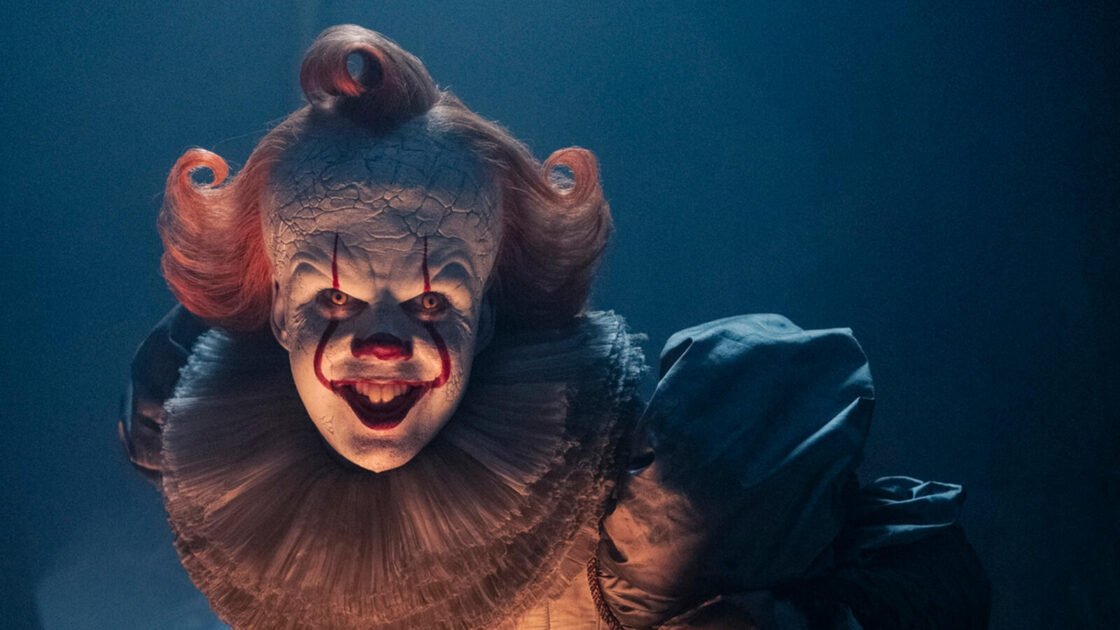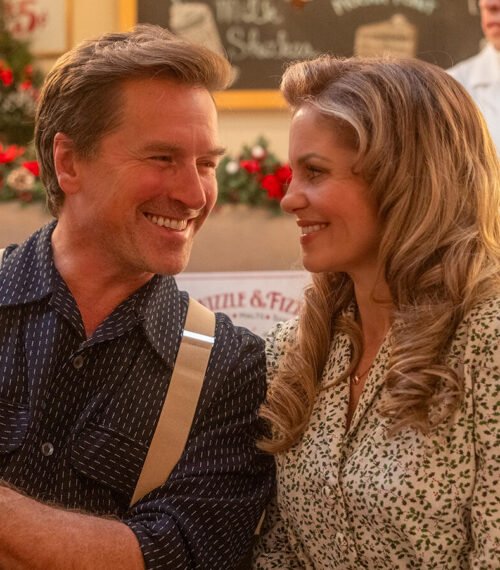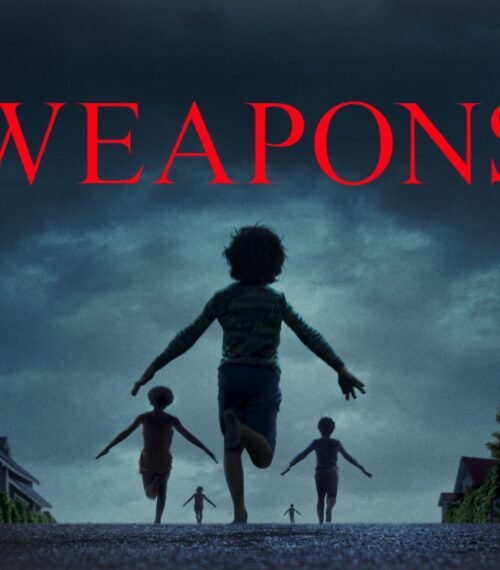Set in 1962, the new HBO series IT: Welcome to Derry functions as a prequel to the two IT feature films from 2017 and 2019. In those films, as in Stephen King’s original 1986 novel, while the supernatural creature known as IT is always lurking within Derry, Maine, it’s every 27 years when a new cycle begins and things get particularly ominous, dangerous, and deadly in the town for a few months.
King set the portion of the story depicting his main characters as children in 1958 and the portion of them reuniting as adults in 1985, but the movies changed this so that the kids were living in 1989 and the adults in 2016. However, many longtime IT fans of both the book and the 1990 miniseries strongly associate the story with that 1958 setting, and that includes Andy Muschietti, who directed the two movies and serves as an executive producer and frequent director on the series. When it came to Welcome to Derry going back so close to King’s original timeframe, Muschietti told TV Guide, “It was one of the beautiful things about doing this after the movies, is going back to the feel of the book. It’s tied to Stephen King’s childhood and he wrote about this era in such detail. It’s very, very special to go back to that world.”
Executive producer and co-showrunner Jason Fuchs said, “It was incredibly exciting because [setting the series in 1962] presented so many opportunities. This sort of idealized version of America that you see in 1962 plays such a contrast to the reality below the surface of Derry; this sort of rot and the terror and the fears. It felt great and it also felt like an opportunity, in terms of our cast of young characters, to play a different variety of young people. In 1962, those kids have a different experience coming of age than kids in 1989. It is a more innocent time… or seemingly so.”
Everything you need for fall TV:
Andy Muschietti described being on set as “the closest you can get to going into a time machine,” with his sister and fellow executive producer, Barbara Muschietti, explaining that the Welcome to Derry production went big when it came to recreating 1962. “We were able to do that in a real town, in Port Hope [in Ontario, Canada]. It really was immersive. We were not in a backlot. We were doing this in the main street of Port Hope. So it really was a trip to go down the street and just have five blocks of 1962.”
A notable inclusion in Welcome to Derry is a younger version of Dick Hallorann, played by Chris Chalk. Dick was first introduced by Stephen King in The Shining, where he is the head cook at the Overlook Hotel; he’s been previously been played by Scatman Crothers in Stanley Kubrick’s classic 1980 film, Melvin Van Peebles in the 1997 Shining miniseries, and Carl Lumbly in the 2019 film adaptation of King’s Shining sequel, Doctor Sleep. When it came to taking on this already-established role, Chalk told TV Guide, “To be able to show Dick in a very different era is the best part, because I’ve already got this groundwork. [The earlier actors] did the hard part by building a fan base for this character, and now I just have to create this while being supported by a great text, a great process, great actors, great network, great creators. I just have to fill in the blanks of when he was younger. It’s incredibly exciting.”
In The Shining and Doctor Sleep, Dick is depicted as a kindly mentor figure, but as Chalk notes, in Welcome to Derry, “He’s not a nice version of himself. Sometimes the kindest people are choosing to be nice. And I even think in that version, in the future, that’s a choice. That’s a conscious choice made through a lot of pain to be a kind human being. But Dick Hallorann, in this version, has no interest or no desire to be kind to anybody. And it’s a journey of, ‘Can I get out of this trap, this box, before I even have to deal with any of these people?’ And the answer is like, ‘Nah, you’ve got to deal with it,’ and watching this man be unfolded upon is part of the journey.”
The vast majority of Stephen King’s books are set in a shared universe, with frequent crossovers that range from small references to major character appearances, and while Dick is Welcome to Derry‘s biggest tie to the larger “Kingverse,” it’s not the only one. Stephen Rider plays Hank Grogan, who gets into serious legal trouble — the specifics of which you’ll need to wait and see — that threatens to send him to the infamous Shawshank State Prison.
On a fan level, Rider said he was thrilled to find out his character would be given this overt connection to The Shawhank Redemption
Naturally, direct ties to aspects from IT are abundant in the series, with many locations and last names that will be familiar to fans. But the most direct link to IT‘s main characters is through the Hanlon family, given Mike Hanlon is one of the central “Loser’s Club” kids in IT. In Welcome to Derry, we follow his grandparents, Leroy (Jovan Adepo) and Charlotte (Taylour Paige), along with their son — and Mike’s eventual father — Will (Blake James).
Adepo and Paige said this lineage was very much on their minds, with Paige recalling “Finding out that we’re his grandparents was not a small responsibility. I want this to be seamless.” Adepo explained, “It was about what we experienced in the show, and what traumas we could have possibly passed on through our son that eventually got passed on to Mike.” Leroy was actually briefly seen as an older man in the first IT movie, played by Stephen Williams, and Adepo pointed out that he’d worked with Wiliams, playing his grandson on The Leftovers, which made it “a fun, weird connection, to get to play him, or a younger version of him, in this show.”
More on HBO and HBO Max:
For those looking for more connections to King’s larger work in the series, executive producer/co-showrunner Brad Caleb Kane promised, “We’ve peppered them throughout. We’ve peppered aspects of the macroverse, aspects of The Dark Tower, aspects of Insomnia, all those things you love; little Easter eggs from the Stephen King universe.” However, he stressed that Welcome to Derry, “Doesn’t exist to do that. It doesn’t exist in the same way that [the Hulu series] Castle Rock existed, as a sort of crossover exercise for the entire Stephen King universe. We wanted to take the themes of the book and apply them to a different cycle when the monster comes out. So it’s really about that and showing how the fears of 1962 are exploited by the monster and are exploited by the human beings at that time in America. And taking an idealized time in America and really scratching the surface and showing the reality underneath.”
Stephen King made it clear in his novel that IT often embodies and amplifies ugliness and hatred already within humanity, which included the terrible racism Mike endured. This is reflected in Welcome to Derry, where characters like Leroy, Charlotte, Hank, and Dick are having to navigate 1962 Derry, which includes plenty of overt prejudice from both some of the other locals or, for Leroy and Dick, fellow soldiers.
Regarding how horror stories like Welcome to Derry can incorporate these kind of themes, Chalk said, “What I appreciate about genre stuff and horror and how it can talk about race is it can trick people who might not like talking about something into talking about something and it can humanize people so that they go, ‘Ah, I thought I hated this thing, this idea, this concept, but now…’ It’s like a spoonful of sugar! It’s like we snuck it in with this genre, but in this story, we really do get to talk about real, present pain, and that’s a good way to force us to have our medicine.”
Adepo explained that he felt, “It’s important to ground the story in something that’s real, just to perhaps make it easier for audiences to relate to the people that they’re watching, to care about them in a very real and organic way. So that by the time the sensational element of it starts to play, you find yourself really caring for these characters and wanting them to survive as a family and as individuals.”
Said Paige, “It’s interesting because the idea of hate and just the human conditioning [of it] being on Earth, it almost does feel supernatural. It almost feels like it goes against who we really are, even though this is who we’ve been and this is man-made thinking; you versus me, I’m different than you, borders, blah, blah, blah. And this is so fascinating, because before we even get to the clown, you think about the warping of evil and the banality of evil and the ignoring and the turning the other cheek, and how that kind of energy, or that kind of lack of accountability or reflection, could even attract a clown that kills children. And so it’s layered… layers on layers on layers. We sit with the humanity of it and then we sit with what would happen if this was a reality. And it doesn’t feel too far off, which is kind of sad.”
The clown Paige mentioned is, of course, IT’s most notable and frequently used form, Pennywise, who’s become a horror icon in his own right, most well-known to today’s audiences from Bill Skarsgård’s impactful version of the character in the two IT films. Though we don’t see him immediately, rest assured that Skarsgård is eventually back in his full Pennywise glory in Welcome to Derry, and his castmates said it was quite a thing to see the actor take on that persona right in front of them on set.
James Remar, who plays General Shaw in Welcome to Derry, described seeing Skarsgård as Pennywise as “Almost an otherworldly experience. I got to meet Bill first out of costume. He was with his daughter. He’s a very, very sweet, lovely gentleman, and then he puts on that costume, and starts to inhabit the character. And when he’s on, it’s almost like looking into the jaws of a shark. I mean, there’s an elemental terror that happens! I’ve been scuba diving and I’ve looked into the teeth of animals that will eat you, and that’s the way it felt with Pennywise. There’s an intelligence, but there’s nothing in the way of feeling. And as an actor, for him to be that physically in command of his instrument and do it with such precision, it’s like watching a tightrope walker just dance along a tightrope. It’s breathtaking.”
Kimberly Guerrero, who plays lifelong Derry resident Rose in the series, described Skarsgård’s performance as “a master class in a collision of an actor that has full capabilities, full access to his instrument, and this incredible entity [where] there’s no sense of compassion. It’s just pure hunger, and it’s hungry for what tastes best, it will eat everything eventually. But what tastes best are these innocent hearts that are terrified; it just tastes better! And so to be in the face of that kind of hunger that Bill embodies, agreed, it’s like, how do you how do you play a shark? There’s nothing human about it. And so it’s just incredible that Bill can give off this vibe, when action is called, and then immediately after the cut, become the sweetest man ever.” She added, “Granted he’s a giant! He’s all tall human being! But just the sweetest human being off camera and is just warm and wonderful.”
Amusingly, Skarsgård’s height was mentioned by many of his costars, with Paige saying, “It really is stunning when you meet him, because he’s so tall and he’s got those crazy, beautiful eyes. But you know those eyes, those are Pennywise’s eyes! And now he gave us so much with his performance that Pennywise is synonymous with Bill Skarsgård, which is… You go down in history, right!?”
The Welcome to Derry producers have noted their long-term hope is to do three seasons, each set 27 years earlier in the midst of the previous IT cycle, with Season 2 in 1935 and Season 3 in 1908. Andy Muschietti was coy on why they’re telling the story in this manner, remarking, “This is our first step in our journey towards the past. This is a story that, on the long arc, will be told backwards for a very specific reason that I cannot reveal yet. But there’s a reason why we’re telling it backwards, and our first step is 1962.”
IT: Welcome to Derry premieres Sunday, Oct. 26 at 9/8c on HBO and HBO Max.





